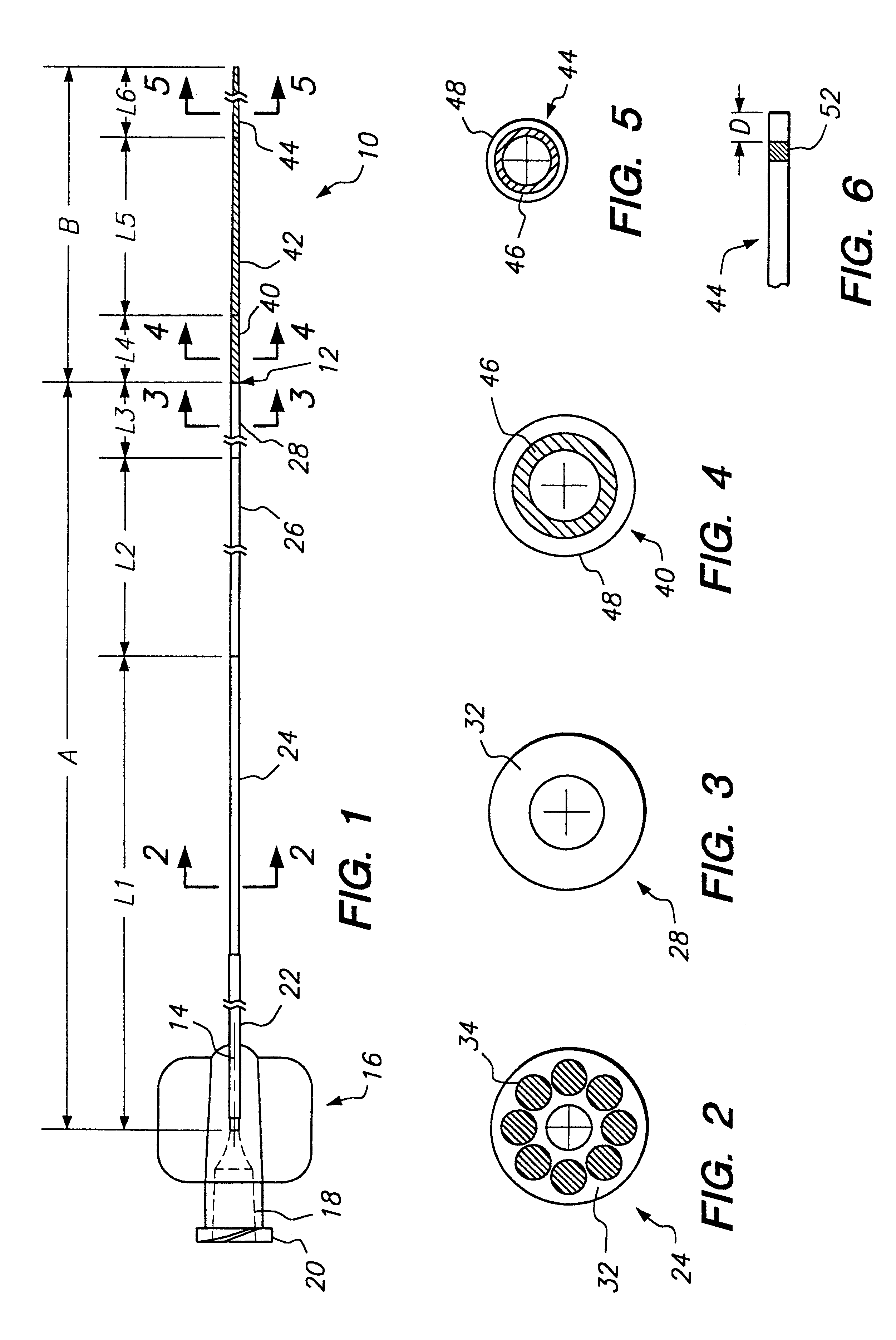Flow directed catheter
a catheter and flow direction technology, applied in the direction of catheters, coatings, etc., can solve the problems of difficult to advance the catheter from the proximal end without causing buckling, polyurethane is undesirable for the delivery of many beneficial agents, and the process of tracking a catheter to a target site with a guidewire becomes difficul
- Summary
- Abstract
- Description
- Claims
- Application Information
AI Technical Summary
Benefits of technology
Problems solved by technology
Method used
Image
Examples
Embodiment Construction
One example of a microcatheter according to the present invention includes a proximal segment A formed of polyester elastomer wall material 32, such as Hytrel (available from New England Urethane and General Polymers), with polyester elastomer strands 34 having a higher durometer than the polyester elastomer of the walls. The polyester elastomer wall material 32 has a durometer of about 30 Shore D, while the strand material 34 has a durometer of about 82 Shore D. The proximal segment A preferably has a burst strength of approximately 160 psi or greater (11.25 kg / cm.sup.2) and is coextruded. A length L1 of the first section 24 may vary from about 100 cm to about 150 cm. The second transition section 26 in which the stiff strand material is gradually blended out has a length L2 of approximately 5 to 40 cm, preferably between 10 and 25 cm. The third section 28 which is formed entirely of the polyester elastomer material of the walls 32 without the strands 34 has a length L3 of approxim...
PUM
| Property | Measurement | Unit |
|---|---|---|
| lumen diameter | aaaaa | aaaaa |
| lumen diameter | aaaaa | aaaaa |
| lumen diameter | aaaaa | aaaaa |
Abstract
Description
Claims
Application Information
 Login to View More
Login to View More - R&D
- Intellectual Property
- Life Sciences
- Materials
- Tech Scout
- Unparalleled Data Quality
- Higher Quality Content
- 60% Fewer Hallucinations
Browse by: Latest US Patents, China's latest patents, Technical Efficacy Thesaurus, Application Domain, Technology Topic, Popular Technical Reports.
© 2025 PatSnap. All rights reserved.Legal|Privacy policy|Modern Slavery Act Transparency Statement|Sitemap|About US| Contact US: help@patsnap.com


